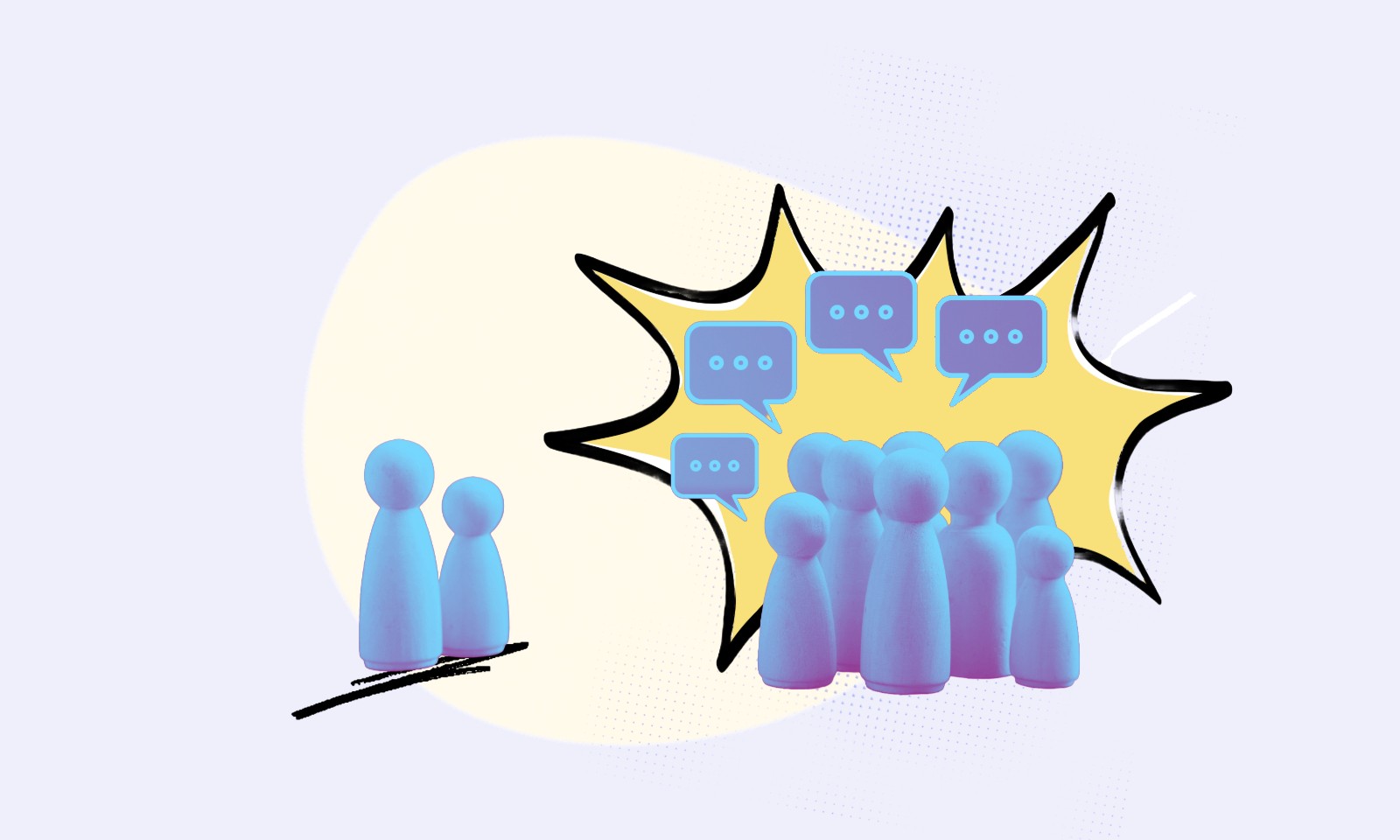27 Mar 2025
Technology
3
min read

Sophie Cherry
,
Brand and Marketing Manager
"Survive until '25" has been a mantra for many. From Brexit, through Covid, onto the inflationary crisis and beyond, strategic planning has been seen as a luxury - unless related to cost cutting. Although so much in the wider world remains unstable (an understatement) it does feel like many organisations are looking forward with cautious optimism and an appreciation that relatively recent developments in digital present huge opportunities for growth in all its forms.
How you approach Digital is both a potential strategic advantage and an essential survival tool, representing an opportunity to reimagine business models and transform customer experiences. Digital strategy in 2025 is being influenced by several key trends that, like many that preceded them, consume time for consideration even if you are not ready to leverage them:
AI and automation
No surprises here. The quote that, “You won’t lose your job to AI, but to someone who can use AI better than you,” encapsulates why all the someone’s out there want to know about AI. Marketers executing campaigns or customers experiencing them is now inevitably experiencing AI in some form. All the digital tools you know and love are better with AI, and a vast range of new ‘AI native’ tools are spewing forth in the greatest tech evolution since, well, possibly ever. We are already at the point when almost everything you do begins with a decision on whether or how to use AI, and then what degree of ‘human’ intervention is required?
The answer to that last question is increasingly less and potentially never, although maybe more in selfish hope for humanity than anything else, just because you don’t have to doesn’t mean you shouldn’t. Whether AI is summarising meeting notes, writing prospecting emails, creating blogs, etc. you still need to read and actually digest them. For the foreseeable future at least, other humans are going to want to talk to you about them, debate and/or question them. The way in which we interface with AI will continue to rapidly evolve, whereas the way we interact as humans will not.
AI-powered personalisation
Virtually every application has been AI enhanced but what AI adds to personalisation may unlock its benefits for many. Integration with content management systems combined with analysis of vast datasets, behaviour, and preferences, combined with other wider publically available information on individuals is enabling the delivery of recommendations, messaging, and content that is hyper-personalised.
The benefits of personalisation in e-commerce have for some years been obvious and targeted product recommendations and pricing, further enhanced with AI, will continue to enhance the shopping experience. Personalisation has been more impactful in B2C with the benefits, i.e. more purchases, very explicitly evident. For B2B however, personalisation has often failed to deliver, largely because of the operational overheads need to implement content-driven personlisation at scale and the benefits, i.e. more leads, being harder to attribute. AI will help address both these issues and more when it comes to B2B and help predict needs with remarkable accuracy, creating journeys that adapt in real-time to changing behaviours and preferences.
Composable architecture dominance
The shift toward composable architecture has accelerated dramatically. Companies are increasingly abandoning monolithic systems in favour of modular, API-first approaches that allow them to integrate technologies that align with their specific needs. Composable architecture enables rapid innovation and faster time-to-market for new features. It allows for quick experimentation and adaptation, enabling businesses to test, learn, and launch new functionalities rapidly.
Like all major shifts, the new approach brings with it new challenges that the old addressed. Implementing flexible digital experience platforms that can evolve alongside business needs without requiring complete system overhauls is great, but the old monoliths integrated ‘out-of-the-box’ (generally) and when there ws a problem only one organisation was on the hook to fix it. Aligning business needs and processes with the right composable stack, then implementing this, is a challenge just as implementing the monolith was. However, the agility that a composable approach brings with it is a significant advantage when done well, especially for organisations that are targeting digital maturity.
Augmented Reality (AR) and Virtual Reality (VR)
While by no means new, AR and VR will have expanded beyond gaming and entertainment, becoming integral in sectors like healthcare, education, retail, and manufacturing. AI is of course part of the reason by enhancing AR and VR experiences through the optimisation of real-time data processing and enabling more sophisticated interactions. Virtual environments have already become and will continue to be increasingly realistic, also leveraging significant improvements to the hardware - the Meta/Ray-Ban tie-up being one very interesting move. Companies are leveraging VR for prototyping, training, and customer engagement, while AR is transforming customer service with AI-powered digital avatars available 24/7. In e-commerce VR bridges the gap between online and physical shopping, allowing customers to virtually try on clothes or test products, while AR enhances the shopping experience with virtual showrooms and interactive product demonstrations.
The need for more advanced hardware remains a significant obstacle for AR and VR development but as costs decrease and accessibility improves, AR and VR are poised to become staples in business practices and everyday life. AR and VR redefine how we interact with digital content and the physical world and with continuous advancements in AI integration, hardware capabilities, and industry-specific applications, these technologies will be transformative for various sectors.
DX strategy challenges in 2025
Although you may be ready to embrace the pwer of digital the enemies of progress lurk in the background. Some of these enemies are nasty, e.g. cybersecurity, others noble and just, e.g. data privacy, some just a pain that must be addressed, e.g. technical debt. How you handle these challenges is probably more impactful to your sucess than how you embrace the new.
Cybersecurity
DX strategies are heavily influenced by cybersecurity concerns and emerging threats with most IT leaders quite rightly identifying the enhancement of cybersecurity measures as their highest priority. Digitally mature organisations recognise that cybersecurity is not an afterthought but a crucial enabler of successful digital transformation.
AI is both a tool and a threat in cybersecurity, with AI-powered cyber-attacks emerging as a significant challenge and cybercriminals using AI to elevate the sophistication of their attacks. In response organisations are investing in AI-driven security solutions to combat these evolving threats. Deepfake technology is also becoming a powerful tool for cybercriminals.
Cloud computing is a cornerstone of digital transformation, but it introduces new cybersecurity concerns due to the shared responsibility model. IoT integration requires robust security measures like device authentication and data encryption.
Data security, management, privacy and compliance
Alongside the huge opportunity presented by leveraging and monetising all that wonderful data comes with it the huge responsibility to protect it and maintain legal compliance. The impact of a data breach, in terms of what can be done with the data itself, the wider costs of dealing with the breach and the reputational damage, are likely to have huge consequences. Additionally, once bad actors have gained access to a network they typically spend time quietly hunting for sensitive information undected. Data of a corporate nature is more often that not protected through anonymisation, encryption, and two factor authentication and therefore inaccessible. However, the images of employee passports, driving licences and other assets ideal for identify theft sit without similar protection on local drives.
With global regulations continuously evolving, maintaining compliance is a moving target that remains challenging. Navigating an increasingly complex landscape of data protection requirements while still extracting valuable insights from their customer data is a challenge that must be embraced. Organisations must balance innovation with regulatory challenges and adopt robust security measures to counter threats that continue to evolve in their nature and sophistication.
Technical Debt and Legacy System Integration
Many enterprises struggle with the burden of legacy systems that weren't designed for today's interconnected digital ecosystem. These can often be core line of business systems that form the didigtal backbone to how an organisation operates and delivers value. The effort and time involved in updating or replacing such systems is huge, that invariably means other inter-relates systems, application and processes need to evolve alongside. Technical debt, which is an inevitable consequence of advancing digital strategies, the addressing of which gets kicked down the road when time or budget is tight.
Organisations must prioritise incremental modernisation, focusing on high-impact areas and ensuring the correct level of expertise is engaged and enough time and space allowe for careful planning. Strong governance is critical as is making sure technical debt is visible and considered along side new feature development as of relatively equal value. By addressing legacy systems and technical debt strategically, organisations will free up significant time to focus on value-generating activities. This is the digitally mature approach where technology drives continual growth and productivity.
Talent and talent management
Talent and management play a critical role in shaping and executing digital DX strategy. The interplay between talent management, leadership, and organisational culture is more important than ever in driving successful DX initiatives. Additionally integrating internal talent with the right level of external skills, and not flip-flopping between in-house and outsource approach, will also help ensure delivering in both the short and longer term. None of this is easy to get right however.
Part of a DX strategy is determining which skills are required and whether the organisation is best served hiring and/or training their own or seeking support from specialist agencies. Firms often struggle to attract and retain the right talent as they cannot offer the sort of environment and pace of change that those who operate in emergine technologies need. Leadership must also play a pivotal role by fostering a culture of innovation, collaboration, and adaptability. Effective leaders can clearly communicate the benefits of transformation, involving employees in decision-making processes, creating a shared sense of purpose and gain buy-in from key stakeholders.
Talent recruitment, management and leadership are not just enablers but central pillars to success. While the demand for digital skills generally outpaces supply and organisations often lack the in-house expertise needed to implement transformative digital initiatives, these challenges can be addressed by establishing strong partnerships with specialised agencies.








